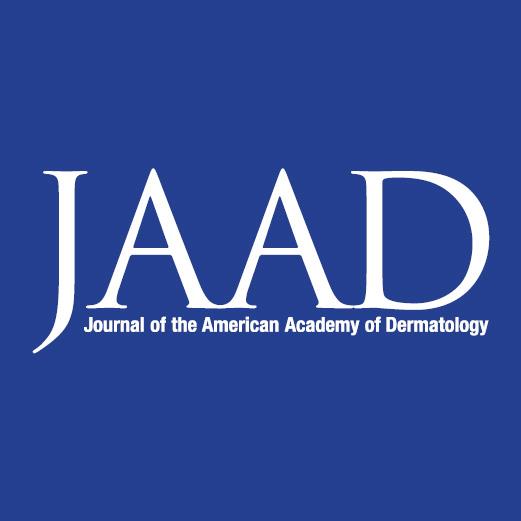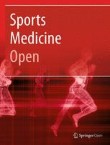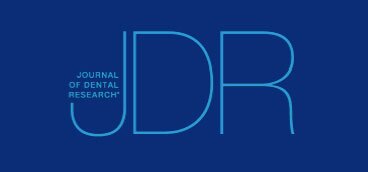Tag Archives: healing
Cannabinoids in Dermatologic Surgery
 “Though known as a medicinal herb for centuries, the recent legalization of cannabinoids across many states has ushered in a new era where cannabinoids have become a popular treatment option amongst clinicians and patients alike. Cannabinoids have demonstrated efficacy in wound healing, reducing inflammation, ameliorating pain, and have shown potential as an anti-tumor agent. As a result, cannabinoids have been rapidly woven into the fabric of modern medicine. However, the utility of cannabinoids in dermatologic surgery has not been explored to date. In this paper, we review the current literature to discuss the potential impact of cannabinoid use in dermatologic surgery.”
“Though known as a medicinal herb for centuries, the recent legalization of cannabinoids across many states has ushered in a new era where cannabinoids have become a popular treatment option amongst clinicians and patients alike. Cannabinoids have demonstrated efficacy in wound healing, reducing inflammation, ameliorating pain, and have shown potential as an anti-tumor agent. As a result, cannabinoids have been rapidly woven into the fabric of modern medicine. However, the utility of cannabinoids in dermatologic surgery has not been explored to date. In this paper, we review the current literature to discuss the potential impact of cannabinoid use in dermatologic surgery.”
Healing autism spectrum disorder with cannabinoids: a neuroinflammatory story
 “Autism spectrum disorder (ASD) is a complex neurodevelopmental disorder with a multifactorial etiology. Latest researches are raising the hypothesis of a link between the onset of the main behavioral symptoms of ASD and the chronic neuroinflammatory condition of the autistic brain; increasing evidence of this connection is shedding light on new possible players in the pathogenesis of ASD.
“Autism spectrum disorder (ASD) is a complex neurodevelopmental disorder with a multifactorial etiology. Latest researches are raising the hypothesis of a link between the onset of the main behavioral symptoms of ASD and the chronic neuroinflammatory condition of the autistic brain; increasing evidence of this connection is shedding light on new possible players in the pathogenesis of ASD.
The endocannabinoid system (ECS) has a key role in neurodevelopment as well as in normal inflammatory responses and it is not surprising that many preclinical and clinical studies account for alterations of the endocannabinoid signaling in ASD. These findings lay the foundation for a better understanding of the neurochemical mechanisms underlying ASD and for new therapeutic attempts aimed at exploiting the renowned anti-inflammatory properties of cannabinoids to treat pathologies encompassed in the autistic spectrum.
This review discusses the current preclinical and clinical evidence supporting a key role of the ECS in the neuroinflammatory state that characterizes ASD, providing hints to identify new biomarkers in ASD and promising therapies for the future.”
https://pubmed.ncbi.nlm.nih.gov/33358985/
“Autism spectrum disorder has a multifactorial and complex etiology. Changes in the endocannabinoid system are found in autistic patients. Neuroinflammation is detected in autistic patients. The endocannabinoid system has a key role in neuroinflammation. Future therapies exploiting cannabinoid drugs.”
https://www.sciencedirect.com/science/article/abs/pii/S0149763420306850?via%3Dihub
Cannabis and its Constituents for Cancer: History, Biogenesis, Chemistry and Pharmacological Activities
 “Cannabis has long been used for healing and recreation in several regions of the world. Over 400 bioactive constituents, including more than 100 phytocannabinoids, have been isolated from this plant. The non-psychoactive cannabidiol (CBD) and the psychoactive Δ9-tetrahydrocannabinol (Δ9-THC) are the major and widely studied constituents from this plant.
“Cannabis has long been used for healing and recreation in several regions of the world. Over 400 bioactive constituents, including more than 100 phytocannabinoids, have been isolated from this plant. The non-psychoactive cannabidiol (CBD) and the psychoactive Δ9-tetrahydrocannabinol (Δ9-THC) are the major and widely studied constituents from this plant.
Cannabinoids exert their effects through the endocannabinoid system (ECS) that comprises cannabinoid receptors (CB1, CB2), endogenous ligands, and metabolizing enzymes. Several preclinical studies have demonstrated the potential of cannabinoids against leukemia, lymphoma, glioblastoma, and cancers of the breast, colorectum, pancreas, cervix and prostate.
Cannabis and its constituents can modulate multiple cancer related pathways such as PKB, AMPK, CAMKK-β, mTOR, PDHK, HIF-1α, and PPAR-γ. Cannabinoids can block cell growth, progression of cell cycle and induce apoptosis selectively in tumour cells. Cannabinoids can also enhance the efficacy of cancer therapeutics. These compounds have been used for the management of anorexia, queasiness, and pain in cancer patients.
Cannabinoid based products such as dronabinol, nabilone, nabiximols, and epidyolex are now approved for medical use in cancer patients. Cannabinoids are reported to produce a favourable safety profile. However, psychoactive properties and poor bioavailability limit the use of some cannabinoids. The Academic Institutions across the globe are offering training courses on cannabis. How cannabis and its constituents exert anticancer activities is discussed in this article. We also discuss areas that require attention and more extensive research.”
https://pubmed.ncbi.nlm.nih.gov/33246167/
https://www.sciencedirect.com/science/article/abs/pii/S1043661820316108?via%3Dihub
The Therapeutic Potential of Cannabinoids for Integumentary Wound Management
 “The increasing legalization of Cannabis for recreational and medicinal purposes in the United States has spurred renewed interest in the therapeutic potential of cannabinoids (CBs) for human disease.
“The increasing legalization of Cannabis for recreational and medicinal purposes in the United States has spurred renewed interest in the therapeutic potential of cannabinoids (CBs) for human disease.
The skin has its own endocannabinoid system (eCS) which is a key regulator of various homeostatic processes, including those necessary for normal physiologic wound healing.
Data on the use of CBs for wound healing is scarce. Compelling pre-clinical evidence supporting the therapeutic potential of CBs to improve wound healing by modulating key molecular pathways is herein reviewed.
These findings merit further exploration in basic science, translational and clinical studies.”
Cannabidiol and Sports Performance: A Narrative Review of Relevant Evidence and Recommendations for Future Research
 “Cannabidiol (CBD) is a non-intoxicating cannabinoid derived from Cannabis sativa. CBD initially drew scientific interest due to its anticonvulsant properties but increasing evidence of other therapeutic effects has attracted the attention of additional clinical and non-clinical populations, including athletes.
“Cannabidiol (CBD) is a non-intoxicating cannabinoid derived from Cannabis sativa. CBD initially drew scientific interest due to its anticonvulsant properties but increasing evidence of other therapeutic effects has attracted the attention of additional clinical and non-clinical populations, including athletes.
Unlike the intoxicating cannabinoid, Δ9-tetrahydrocannabinol (Δ9-THC), CBD is no longer prohibited by the World Anti-Doping Agency and appears to be safe and well-tolerated in humans. It has also become readily available in many countries with the introduction of over-the-counter “nutraceutical” products.
The aim of this narrative review was to explore various physiological and psychological effects of CBD that may be relevant to the sport and/or exercise context and to identify key areas for future research. As direct studies of CBD and sports performance are is currently lacking, evidence for this narrative review was sourced from preclinical studies and a limited number of clinical trials in non-athlete populations.
Preclinical studies have observed robust anti-inflammatory, neuroprotective and analgesic effects of CBD in animal models. Preliminary preclinical evidence also suggests that CBD may protect against gastrointestinal damage associated with inflammation and promote healing of traumatic skeletal injuries. However, further research is required to confirm these observations.
Early stage clinical studies suggest that CBD may be anxiolytic in “stress-inducing” situations and in individuals with anxiety disorders. While some case reports indicate that CBD improves sleep, robust evidence is currently lacking. Cognitive function and thermoregulation appear to be unaffected by CBD while effects on food intake, metabolic function, cardiovascular function, and infection require further study.
CBD may exert a number of physiological, biochemical, and psychological effects with the potential to benefit athletes. However, well controlled, studies in athlete populations are required before definitive conclusions can be reached regarding the utility of CBD in supporting athletic performance.”
https://pubmed.ncbi.nlm.nih.gov/32632671/
“CBD has been reported to exert a number of physiological, biochemical, and psychological effects that have the potential to benefit athletes. For instance, there is preliminary supportive evidence for anti-inflammatory, neuroprotective, analgesic, and anxiolytic actions of CBD and the possibility it may protect against GI damage associated with inflammation and promote the healing of traumatic skeletal injuries.”
https://sportsmedicine-open.springeropen.com/articles/10.1186/s40798-020-00251-0
Cannabinoid receptor 2 agonist promotes parameters implicated in mucosal healing in patients with inflammatory bowel disease.
 “Cannabis benefits patients with inflammatory bowel disease (IBD).
“Cannabis benefits patients with inflammatory bowel disease (IBD).
Cannabinoid receptors are expressed in gut immune cells and in epithelial cells of inflamed guts.
Mucosal healing (MH) requires epithelial layer restoration.
CONCLUSION:
Using ex vivo and in vitro human models, we demonstrated that manipulating the cannabinoid system affects colon cells and secretome characteristics that facilitate MH in IBD.”
https://www.ncbi.nlm.nih.gov/pubmed/32213014
“Experimental studies and recent clinical trials suggest that treatment with cannabis benefits patients with IBD.”
Beta-caryophyllene enhances wound healing through multiple routes.
 “Beta-caryophyllene is an odoriferous bicyclic sesquiterpene found in various herbs and spices.
“Beta-caryophyllene is an odoriferous bicyclic sesquiterpene found in various herbs and spices.
Recently, it was found that beta-caryophyllene is a ligand of the cannabinoid receptor 2 (CB2). Activation of CB2 will decrease pain, a major signal for inflammatory responses.
We hypothesized that beta-caryophyllene can affect wound healing by decreasing inflammation. Here we show that cutaneous wounds of mice treated with beta-caryophyllene had enhanced re-epithelialization.
The treated tissue showed increased cell proliferation and cells treated with beta-caryophyllene showed enhanced cell migration, suggesting that the higher re-epithelialization is due to enhanced cell proliferation and cell migration. The treated tissues also had up-regulated gene expression for hair follicle bulge stem cells. Olfactory receptors were not involved in the enhanced wound healing. Transient Receptor Potential channel genes were up-regulated in the injured skin exposed to beta-caryophyllene. Interestingly, there were sex differences in the impact of beta- caryophyllene as only the injured skin of female mice had enhanced re-epithelialization after exposure to beta-caryophyllene.
Our study suggests that chemical compounds included in essential oils have the capability to improve wound healing, an effect generated by synergetic impacts of multiple pathways.”
https://www.ncbi.nlm.nih.gov/pubmed/31841509
https://journals.plos.org/plosone/article?id=10.1371/journal.pone.0216104
“β-caryophyllene (BCP) is a common constitute of the essential oils of numerous spice, food plants and major component in Cannabis.” http://www.ncbi.nlm.nih.gov/pubmed/23138934
“Beta-caryophyllene is a dietary cannabinoid.” https://www.ncbi.nlm.nih.gov/pubmed/18574142
Myorelaxant Effect of Transdermal Cannabidiol Application in Patients with TMD: A Randomized, Double-Blind Trial.
 “The healing properties of cannabidiol (CBD) have been known for centuries.
“The healing properties of cannabidiol (CBD) have been known for centuries.
In this study, we aimed to evaluate the efficiency of the myorelaxant effect of CBD after the transdermal application in patients with myofascial pain.
Results: in Group1, the sEMG masseter activity significantly decreased (11% in the right and 12.6% in the left masseter muscles). In Group2, the sEMG masseter activity was recorded as 0.23% in the right and 3.3% in the left masseter muscles. Pain intensity in VAS scale was significantly decreased in Group1: 70.2% compared to Group2: 9.81% reduction. Patients were asked to apply formulation twice a day for a period of 14 days.
Conclusion: The application of CBD formulation over masseter muscle reduced the activity of masseter muscles and improved the condition of masticatory muscles in patients with myofascial pain.”
Activation of Cannabinoid Receptors Promote Periodontal Cell Adhesion and Migration.
 “Medical and recreational cannabis use is increasing significantly, but its impacts on oral health remains unclear.
“Medical and recreational cannabis use is increasing significantly, but its impacts on oral health remains unclear.
The aim of this study is to investigate the effects of tetrahydrocannabinol (THC), the major active component in cannabis, on periodontal fibroblast cell adhesion and migration to explore its role in periodontal regeneration and wound healing.
RESULTS:
Both CB1 and CB2 were expressed in periodontal tissues but with different expression patterns. THC promoted periodontal cell wound healing by inducing HPLF cell adhesion and migration. This was mediated by focal adhesion kinase (FAK) activation and its modulation of MAPK activities. The effect of cannabinoids on periodontal fibroblast cell adhesion and migration were mainly dependent on the CB2.
CONCLUSION:
These results suggested that cannabinoids may contribute to developing new therapeutics for periodontal regeneration and wound healing.”

 “Oral ulcer is a common oral inflammatory lesion accompanied by severe pain but with few effective treatments. Cannabidiol (CBD) is recently emerging for its therapeutic potential in a range of diseases, including inflammatory conditions and cancers.
“Oral ulcer is a common oral inflammatory lesion accompanied by severe pain but with few effective treatments. Cannabidiol (CBD) is recently emerging for its therapeutic potential in a range of diseases, including inflammatory conditions and cancers.